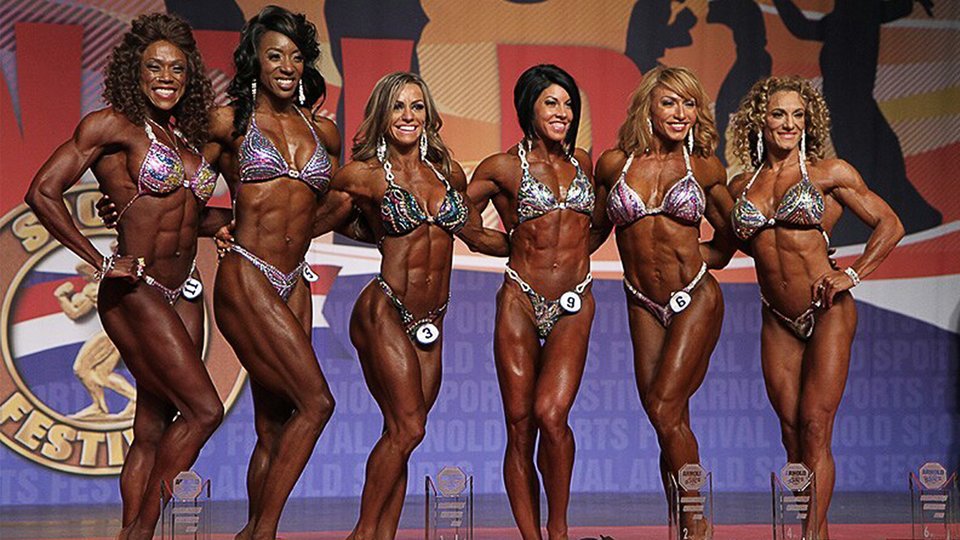People decide to enter a physique contest for a variety of reasons. Perhaps you saw a photo of Candice Lewis-Carter or Courtney King and said, ”I want to look like that.” Maybe your days as a gymnast, swimmer, weightlifter, or tennis player are over, but you still want to compete. Maybe someone in the gym mentioned you have ”great genetics,” and you’re intrigued.
But regardless of the reason, there’s an obvious follow-up: Which division should you choose? With five very different women’s divisions, your first step is to determine the best fit for your physique, your development, and your goals. Different divisions emphasize different sizes, styles, and levels of conditioning.
Today, the main divisions include:
- Bikini
- Figure
- Women’s Physique
- Bodybuilding
- Fitness
Here’s a rundown of each division to help you decide which one is right for you.
Bikini
Bikini is currently the most popular women’s division by far. Because it requires less muscular development than traditional bodybuilding, bikini appeals to a wider variety of women. Judges look for curvy, balanced physiques with some muscle tone depending on the specific organization and level of competition.
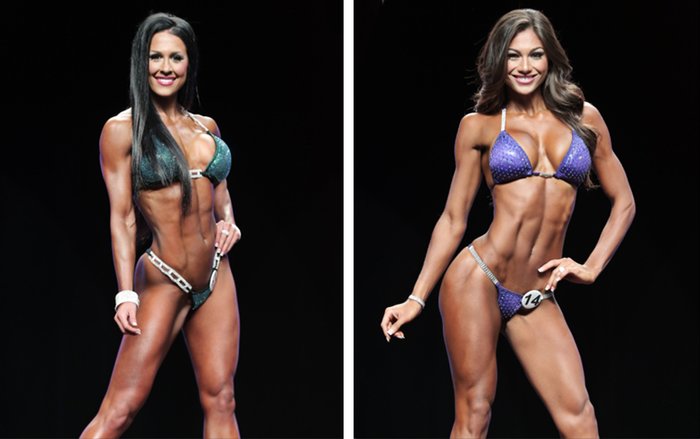
Competitors wear two-piece suits with ”scrunchy” bottoms, high heels, and sparkling jewelry, and they are judged on overall physical appearance, including complexion and presentation. Attitude counts for a lot as they perform model walks and hit front, rear, and over-the-shoulder poses.
As is true for all the divisions, the degree of conditioning and muscularity will intensify as you go from local contests to national qualifiers to professional competitions. This progression is good to keep in mind when considering your ultimate goal.
Ideal competitor: A small waist with a balanced, curvy structure and long, shapely legs are the ideal genetics for bikini. Sculpting to create the illusion is what it’s all about. ”The bikini division calls for more of an hourglass figure,” says Gigi Amurao, an IFBB pro and personal trainer. ”If a competitor is a little bottom or top heavy, that can be shaped by diet and training.”
Shape your body for success and shine onstage with the perfect fat burner.
Figure
Competitors in this division also wear heels and jewelry, but the focus is on a more developed physique and achieving muscular symmetry and proportion. Onstage, they do strict quarter turns in a neutral position, making it harder to hide flaws from the judges.
Figure athletes should have good muscularity, with separation but with no visible striations. The judges are looking for bodies that have shapely lines and overall firmness, but are not excessively lean. Skin tone and makeup are also judged as part of the final score.
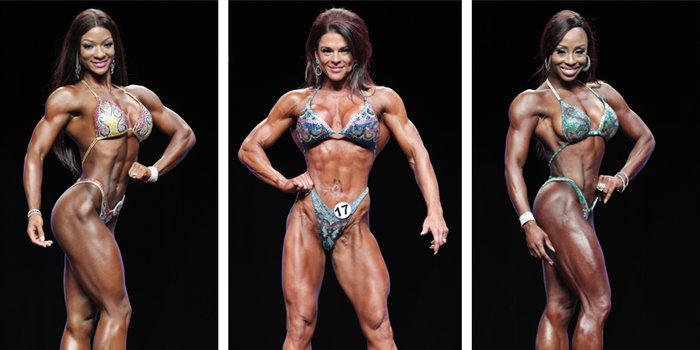
Ideal competitor: Wide shoulders and a small waist as good genetics for figure, but body type is only part of the equation. ”If a woman carries more muscle naturally and easily gets lean, figure would be the better choice over bikini,” says top figure pro Ann Titone.
Women’s Physique
Women’s physique division (WPD) kicks it up a notch—or three. Physique judges are looking for symmetry, shape, proportion, muscle tone, and poise. Athletes wear two-piece suits with V-shaped bottoms and are barefoot onstage, and the posing is similar to a traditional bodybuilding with quarter turns as well as mandatory poses.
The open-handed front and back double-biceps shots are considered more feminine than the close-fisted bodybuilding versions and are unique to women’s physique. Competitors also perform an individual posing routine at the judging, as well as a 90-second routine to music at the finals.
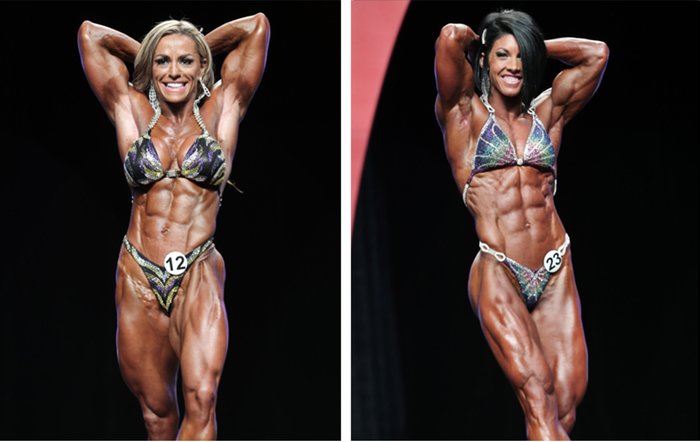
Ideal competitor: If you put on muscle easily, have trouble keeping it toned down for figure, and are comfortable with a higher level of development, you’re a good candidate for women’s physique. “WPD and figure are similar in many ways,” says Titone. ”If WPD is a goal and a competitor has smaller muscle bellies, she could start in figure and ’grow into’ physique.”
BCAAs help you maintain muscle mass and recover while cutting down for competition.
Women’s Bodybuilding
This division features the most muscular women’s physiques, and though many promoters have swapped women’s physique for bodybuilding, you can still find women’s bodybuilding at all levels of competition, including national events and the pros.
The judges are looking for the so-called total package, which is a balance of size, symmetry, and muscularity. Athletes do quarter turns and mandatory poses, including traditional closed-fisted muscle shots, and perform individual posing routines at the judging and finals.
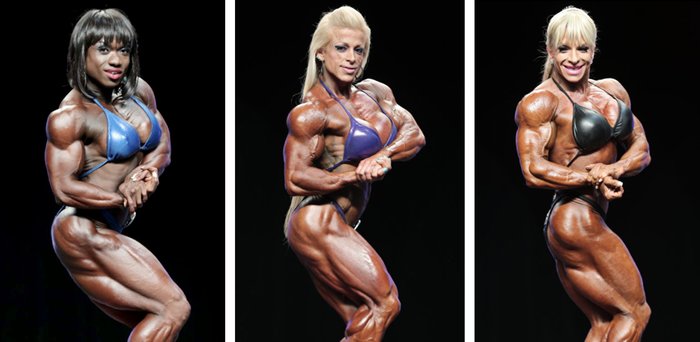
This division is not for the faint of heart. If you have trouble putting on muscle or are not able to put in the time at the gym—and the kitchen, and the practice studio—to build and maintain and perfect your physique and your routine, then bodybuilding may not be for you.
Ideal competitor: If you love building muscle, would rather not wear heels, and crave a chance to show off your hard work in a routine—bodybuilding might be for you.
Fitness
Fitness was the first division to branch off from bodybuilding. It features a standard physique round as well as a unique fitness routine performed to music featuring elements of dance, strength moves, and gymnastics. The physique portion of this division is essentially the same as in figure, but the overall emphasis is on the routines, which are worth two-thirds of your final score.
Former gymnasts, cheerleaders, and dancers thrive in this division, but you don’t have to have formal training to take the fitness challenge. Notable champs who did not start out as gymnasts include all-time Olympia winner Adela Garcia and recently retired top pro Tanji Johnson.
As with bodybuilding, newer divisions have depleted the fitness ranks, in many cases because women who didn’t have the skills to excel in the routines—or the time—crossed into figure. Even so, it’s a marquee event at big professional shows, like the Olympia and Arnold Classic, with pro cards awarded at many of the qualifiers. The athletic requirements of fitness are unlike any other category and make up the majority of the final score. If your muscles are more “show” than “go,” you’re better off competing in figure or physique.
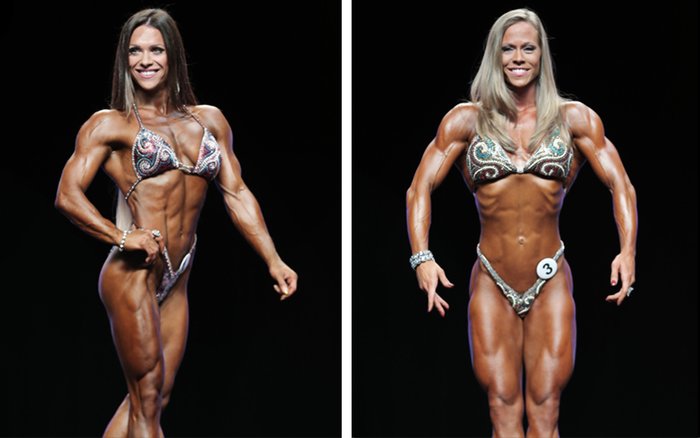
Ideal competitor: If you love to perform, can put together a routine, and are willing to devote ample time to perfecting both your physique and an ambitious routine, fitness may give you a quicker trip to the pros than other divisions.
5 Questions to Help You Find Your Division
Even if you’ve made up your mind about which sport you want to try, here are few factors to consider when you’re sitting with that entry form in your hand:
1. What is your body type? Take an honest look at your body type and consider which divisions are a reasonable given your preparation timeframe. Shorter, thicker-waisted girls tend to struggle in the lean and curvy bikini division, just as taller, lanky girls find it tough to adequately develop their longer muscle bellies for physique. Remember: Just because you do not have the ”right” body for a division does not mean you can’t do well—but it will be more challenging.
2. Do you have the time to commit? Take a detailed inventory of everything it takes to get onstage—training, nutrition, posing practice, wardrobe, and appearance. Are you ready to commit to each and every one? Training for a bikini competition is by no means easy, but physique or fitness add even more items to your to-do list, like more training and extra practice sessions for your routine and choreography.
3. Do you enjoy performing? If you’re choosing between figure and physique, the chance to perform a routine could be a deciding factor. If you love the spotlight and want more time onstage, a division with greater opportunity for posing routines may be right for you.
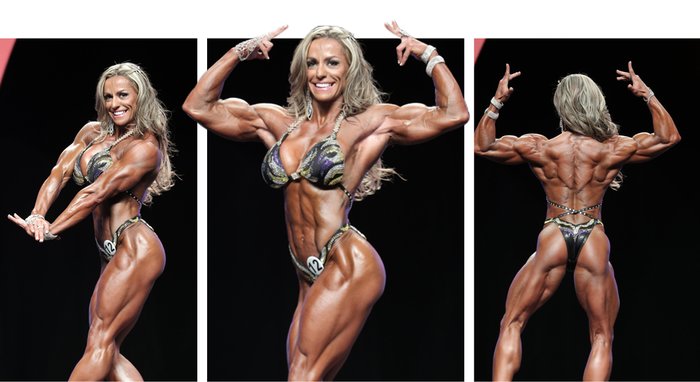
4. How much do you love muscle, and how easily do you build it? Are you a mesomorph who struggles to hold it down for figure (or bikini), or a hardgainer who has to fight for every ounce of lean mass? Once you start working toward your competition goal, muscle will inevitably become an issue. Also consider how much size your body can carry aesthetically and what you are ultimately comfortable with.
5. What makes you happy? This really is the bottom line when it comes to choosing a division. “It’s the first thing I ask new clients,” says Liberman. ”What makes you happy? What do you want to do?” It goes without saying that you should also try to see what you’re getting yourself into. Attend a show, preferably one that includes multiple divisions as well as novice and masters classes. Pick a local event or ”national qualifier,” where you’ll get an idea of the competition you will face.
In the end, though, the final decision is up to you. Where you are in your training will have a lot to do with where you start your competition journey, but it does not dictate where you will end up. Do what makes you happy and you’ll enjoy your journey to the stage all the more.
